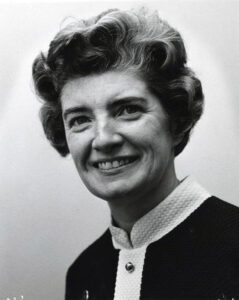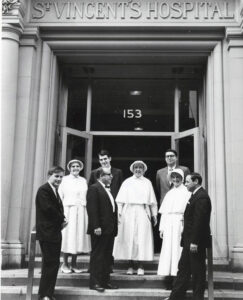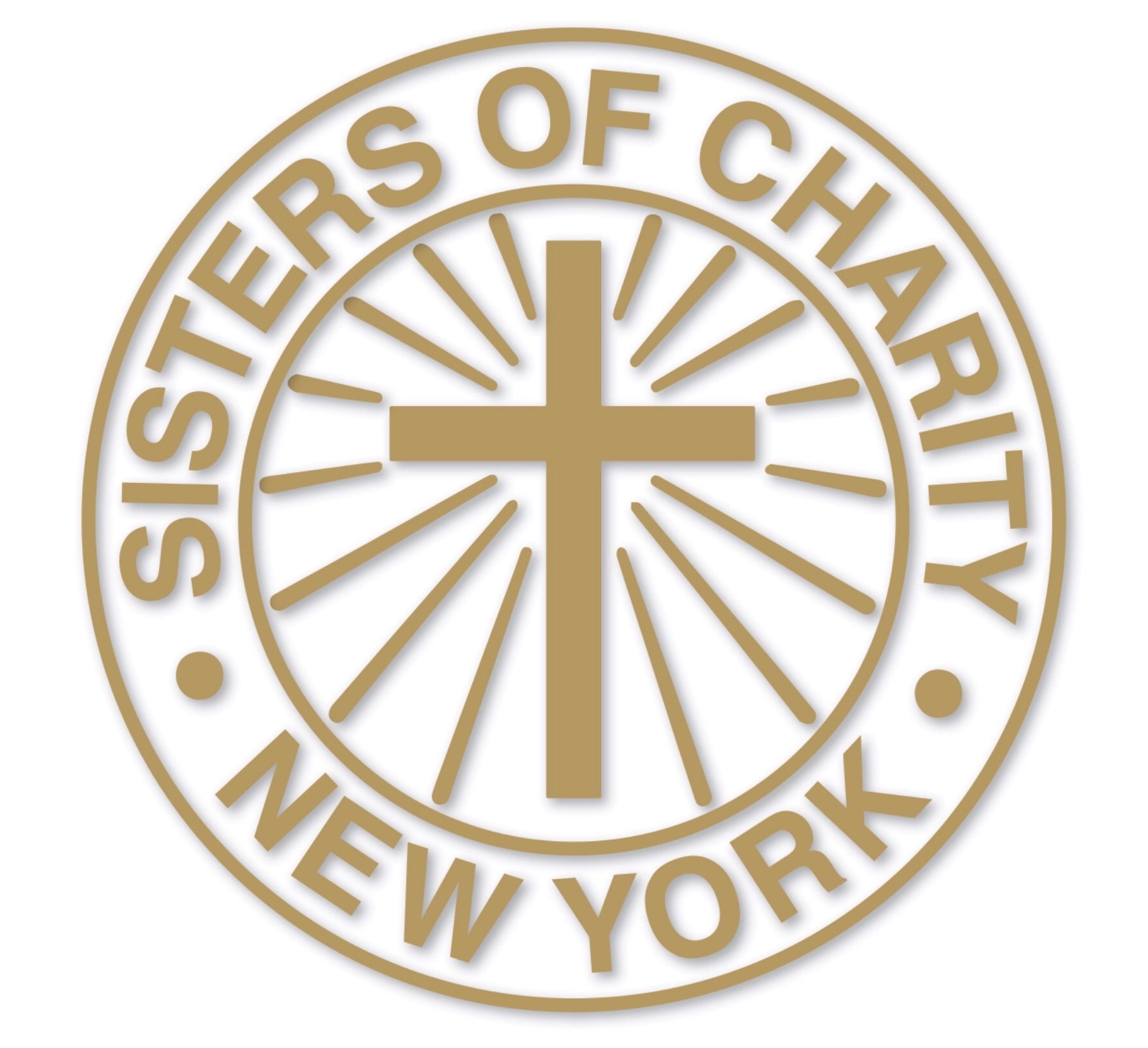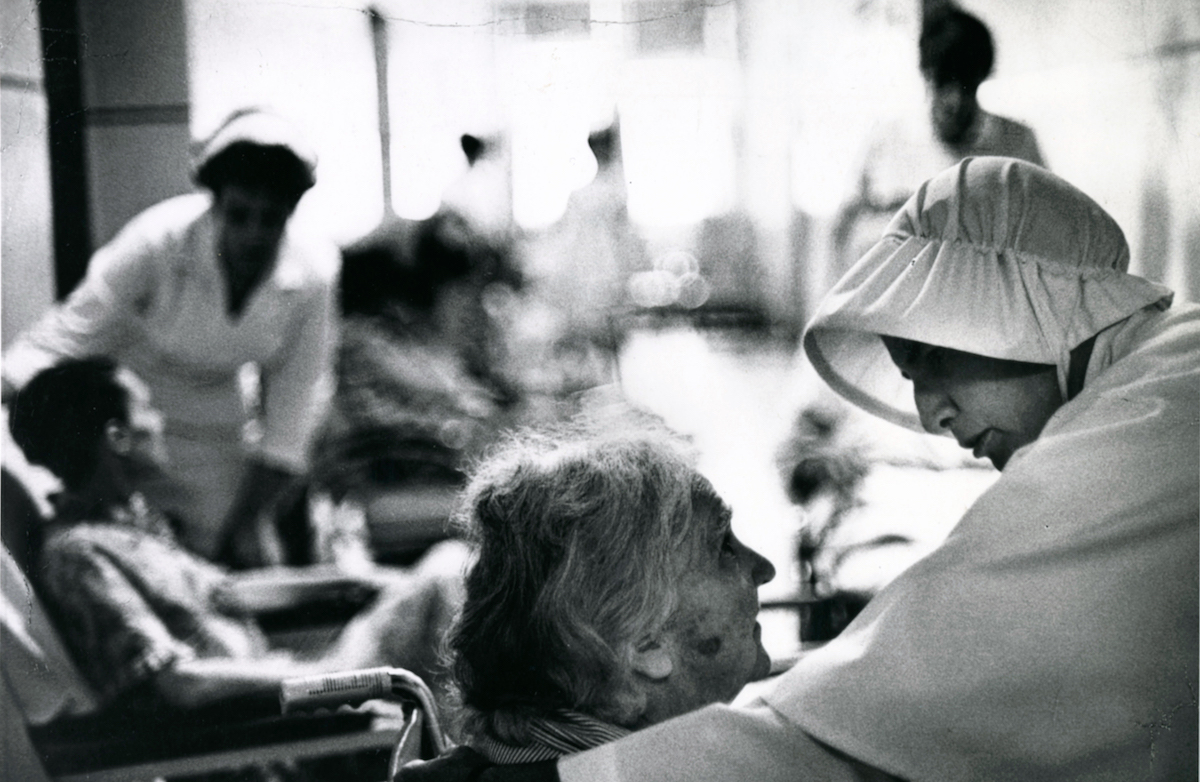
Sister Margaret Sweeney, President, St. Vincent’s Hospital
Sister Margaret Sweeney (Sister Mary Jeremiah) was a Sister of Charity for 75 years. A teacher at Saint Joachim School Beacon for two years, in 1950 she was assigned to a “temporary transfer” to St. Vincent’s Hospital, Manhattan, which lasted for forty years. During this time, Sister Margaret attained increasing responsibility, serving as Supervisor and as Assistant Controller in the business office and later in roles with increased administrative authority in various departments.
In 1980, Sister Margaret was appointed President and Chief Executive Officer of Saint Vincent’s Hospital and Medical Center of New York, serving in this capacity until 1990. In her years of active ministry at Saint Vincent’s Hospital, Sister Margaret was an advisor to its Board of Trustees and Pension Board. She held office on the parish council of Saint Joseph Church, Greenwich Village, and she was a member of the New York State Advisory Committee on Health to the Conference of Bishops.
Two significant achievements of her administration were developing a master plan for modernization and the initiation of several community-responsive programs. Sister Margaret devoted a lifetime to improving health care for persons whose life circumstances were lived in poverty.
Sister Miriam Kevin Phillips, the former Director of Saint Vincent’s Hospital School of Nursing, 1991-1999, and Sister Karen Helfenstein, former Senior Vice President for Mission, worked with Sister Margaret at the Manhattan hospital. Their recent conversation about Sister Margaret details fond memories of her unique strength and compassion.
Sister Margaret died on Sunday April 11, 2021; her funeral was held on Saturday April 17, 2021
at St. Margaret of Cortona in Riverdale.
Excerpts from this recent reminiscence include photographs from the archival collection of St. Vincent’s Hospital Medical Center at the Archives of the Sisters of Charity of New York.

(l to r): Sisters Anthony Marie Fitzmaurice, Mary Helen Tobin, Margaret Jeremiah Sweeney and five administrators in front of hospital entrance
The first thing I would like to say about Sister Margaret was that regardless of what her position was, at the top or anywhere else in the organization, she never lost her sense of humor. She never lost her sense of friendliness. She never lost her ability to make people feel comfortable in her presence, regardless of whether they were being praised or reprimanded. She knew how to do both without, denigrating anyone… You always know that no matter what it was even if she didn’t approve of it, she had a way of showing her disapproval that never made you feel less important. …She wanted you to see that you were valued.
Sister Karen Helfenstein: I was thinking of the time when she was the administrator and the AIDS epidemic broke out and it didn’t rattle her. And there were major, major shifts and changes happening, because we found ourselves in St. Vincent’s at the epicenter of the epidemic. And we didn’t use the expression PPE (personal protective equipment) in those days, but the amount of gloves and gowns and masks that we had to use was enormous and we didn’t get a penny more reimbursement for the patients.
Doctors were complaining that with all these patients with AIDS in the hospital, recruitment of interns and residents was affected. And she just held the line and said, “The patients come to us and we’ve been here and we will take care of them.” No forgiveness for any person that said, “I don’t want to go in that room.” No doctor could refuse to do a consult.
If they came and spoke with her, she just said, “No, we’re here for the patients. We will all take care of patients.” We became a center for excellence in care of patients with AIDS and a research center where doctors came to study and to work with pharmacy companies. And the whole triple cocktail was really researched and discovered at St. Vincent’s.
Sister Kevin Phillips: She just exuded a calmness, a peacefulness, a sense of empathy that reached out to everybody… She was one of the steadiest people that I have had the privilege to work for and with. She demanded perfection in a calm way, making you feel comfortable and then saying, “Now, did you ever consider this? Or maybe it would be better if you did that?” And never coming at you like, “What’s the matter with you that you can’t see what you’re supposed to be doing?” Never.
She was able to always be peaceful…and I think that that was mistaken, that people thought she needed to be otherwise, because St. Vincent’s was going through some difficult times financially and in other ways. We had over 4,000 employees at St. Vincent’s and … when you mentioned Margaret Sweeney’s name, there was, “Oh, yeah, yeah, she’s a good person.”
Sister Karen Helfenstein: She was unflappable. I remember too, she was President during the strike in 1984.
Sister Kevin Phillips: Yes, the 1199 strike*, but still, there was something about St. Vincent’s that people found ways to get around that and try to bring out the best in each other, right? If she had to take some sort of action, it would always be done with kindness and consideration, and compassion. And I think that that is in a leader in such a mixed environment where you’re basically alone because there was no other hospital, we were Catholic; we were not necessarily what they wanted. I never saw Margaret lose her cool about anything. She would always have words of wisdom, cloaked in kindness.
Sister Karen Helfenstein: We did, and we managed to do it fairly well. I remember one day she took me upstairs and said, “I want you to come to visit a patient with me.” We went up to the 16th floor in the Coleman Building, and the door was closed to this patient’s room. The patient’s name was Ruth Goldstein. I thought that maybe she was a local civil representative, or a Councilwoman. We go in and Mother Teresa of Calcutta is in the bed. So that was really, very interesting. She then she explained to me how Mother Teresa talked with her about her admiration for the Sisters of Charity of New York, and what we do, because she could never imagine working with all the regulations, all the reporting and all that we need to do to take care of sick and poor people.
Sr. Kevin Phillips: Margaret never sought the limelight. I don’t remember Margaret ever looking for any kind of special attention, or privilege or anything. She was part of the group, part of the family and she was looked upon that way. She knew how to compartmentalize what was important when it was important. But not to be consumed by it. So it’s wonderful to be able to leave a legacy like that. She was a wonderful example of a Sister of Charity, in every way. She loved a good time, she loved to party, she loved to dance and I’m sure she’s having a ball up there!
*A strike of non-medical employees at 27 New York-area hospitals organized by District 1199 of the Retail, Wholesale and Department Store Union, A.F.L.-C.I.O., and the League of Voluntary Hospitals and Homes, the bargaining agent for the hospitals.
Transcribed and edited by Mindy Gordon, Director, Archives and Museum
Remembering Sister Margaret Sweeney
Image 1 of 17
Sister Margaret Sweeney speaks with elderly female patient. ca. 1960-1965




Another warrior for God. I got to know sister for quite a few years towards the end of her life. Such a lovely courageous woman. I feel so fortunate that I have been around the likes of Sister Sweeney. I’ve learned so much about perseverance, Humility and love. They always talk about the greatest generation in regards to the soldiers in World War II. These women of this generation where their true people of the greatest generation. God bless her soul.
What a wonderful and inspirational lady. Pray for us Sister Margaret Sweeney.
The man on the left in picture #4 was Mr Hussey who was the Chairman of the Board for a few years. He was a bank executive.
The first man in picture #14 was John Fales an administrator, the man next to Sister Evelyn Was Gary Horan, an administrator not Dr Burchell. The woman in front was Mary Ellen Doyle who was an administrator intern